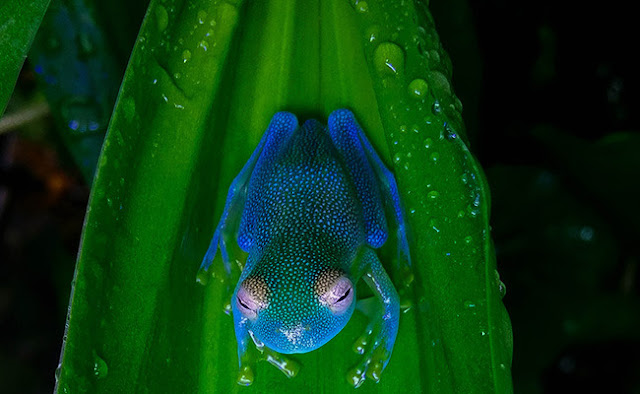Leslie Phillips, Amphibian Keeper at the Garden, with a newly hatched Eleutherodactylus coqui We had particularly great luck finding frogs yesterday while giving a tour of the Fuqua Conservatory to the Development Team at the Garden. The timing was perfect as a clutch of Coqui eggs was hatching right before our eyes! Coqui, and frogs of the genus Eleutherodactylus are direct developers , meaning the eggs develop directly into froglets and the tadpole stage is skipped. This allows the frogs to lay their eggs anywhere with a little moisture and there is no need for standing water. We were able to find both varieties of Red-eyed Leaf Frog, Agalychnis callidryas . The Bijagual form, with maroon eyes and orange stripes on the flanks, and the La Selva form with red eyes, and purple/blue stripes. Later that day, we went to the Atlanta History Center where we are consulting with them on constructing an ephemeral wetland on their property. We found Two-lined Salamanders (o...


